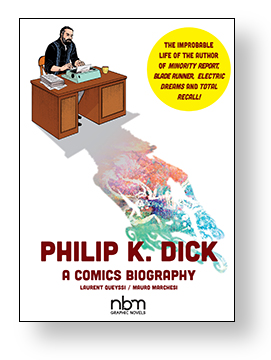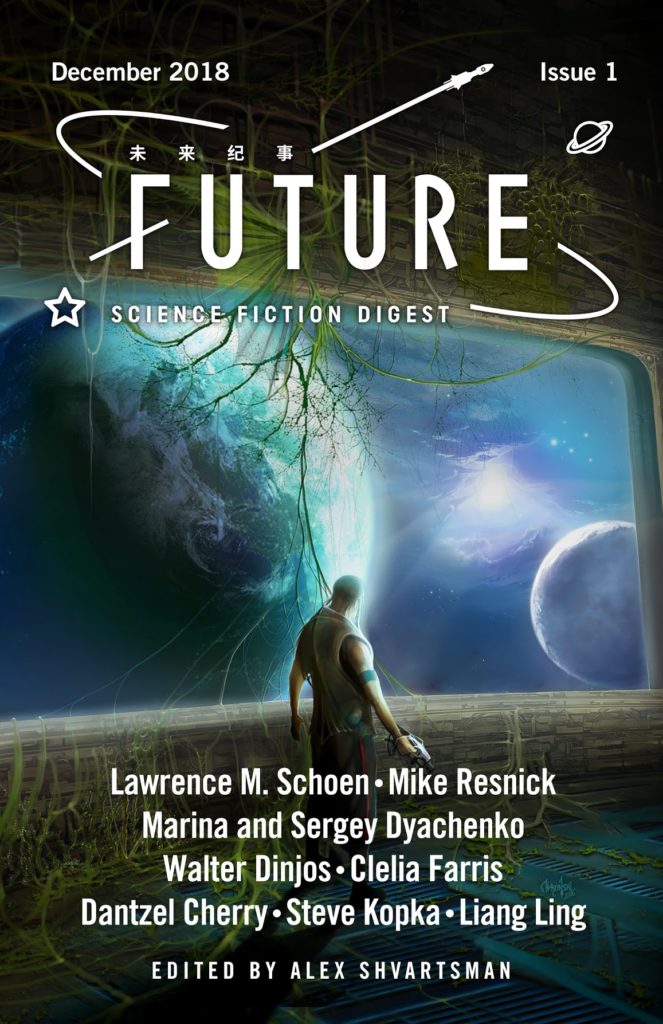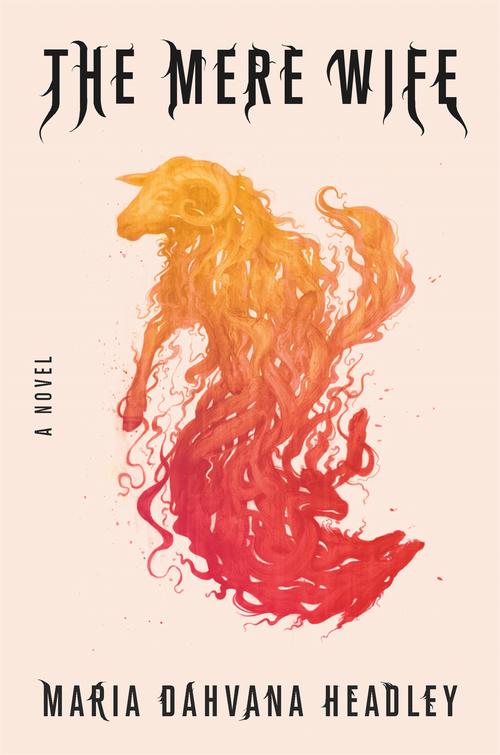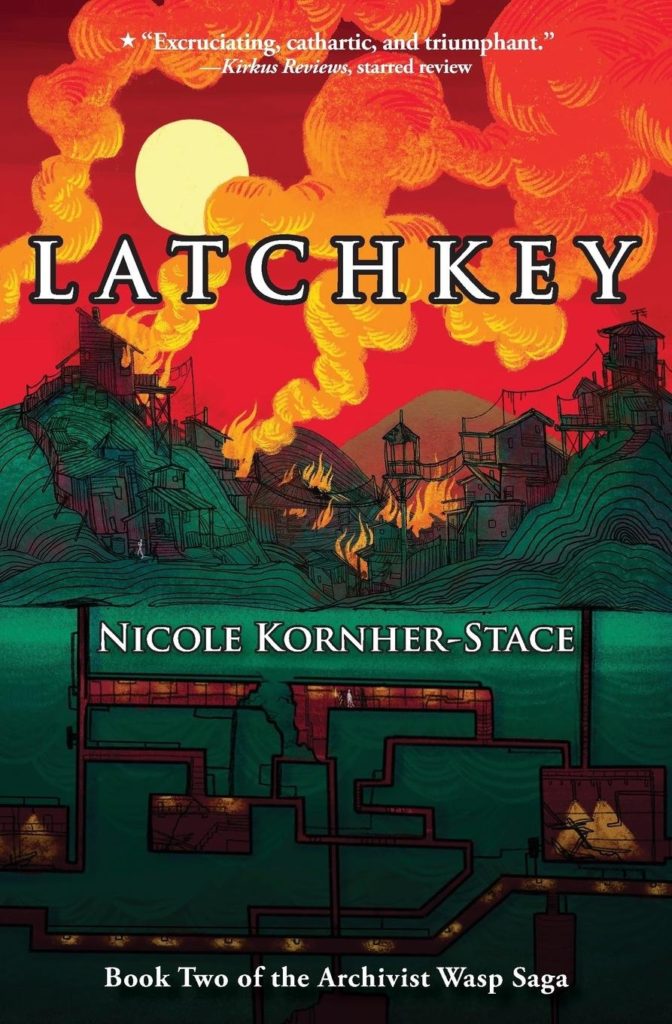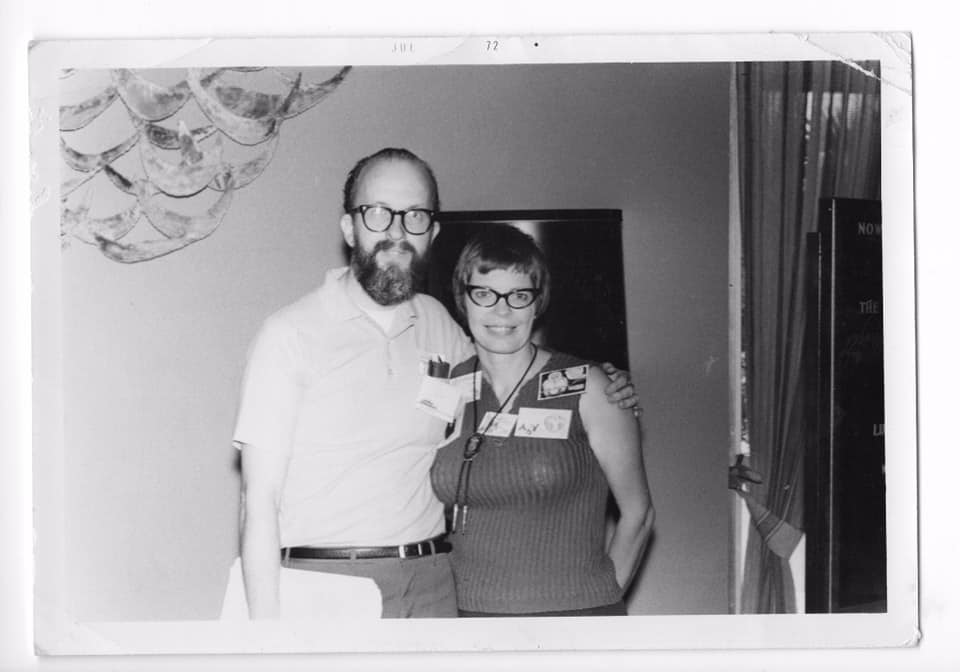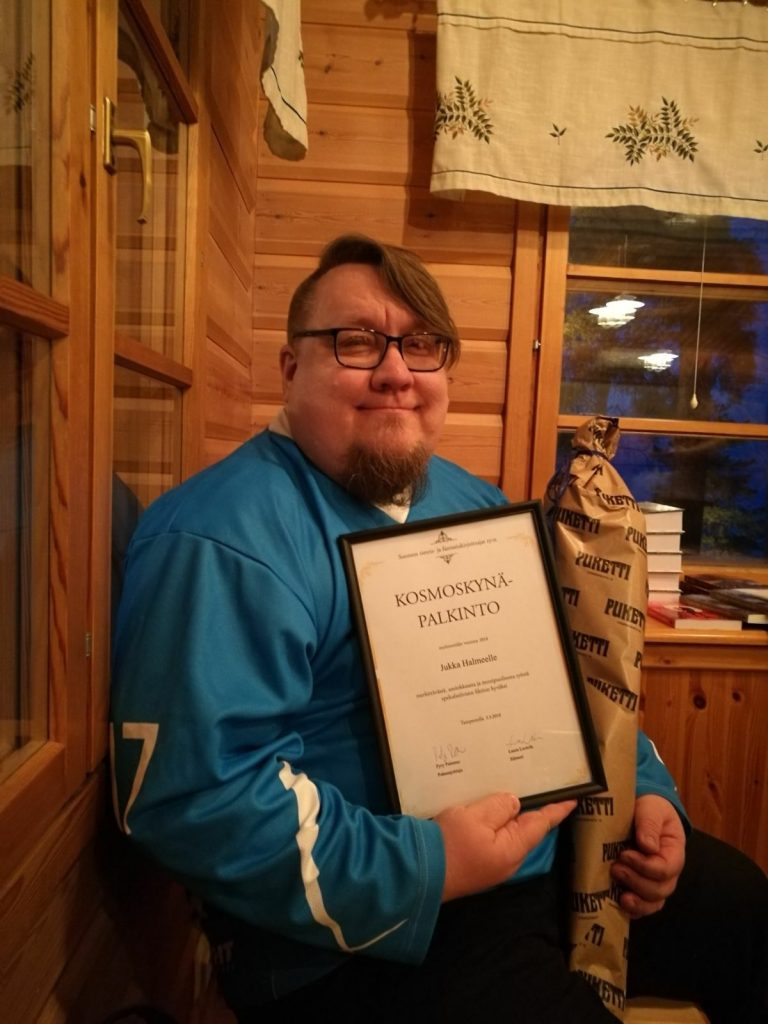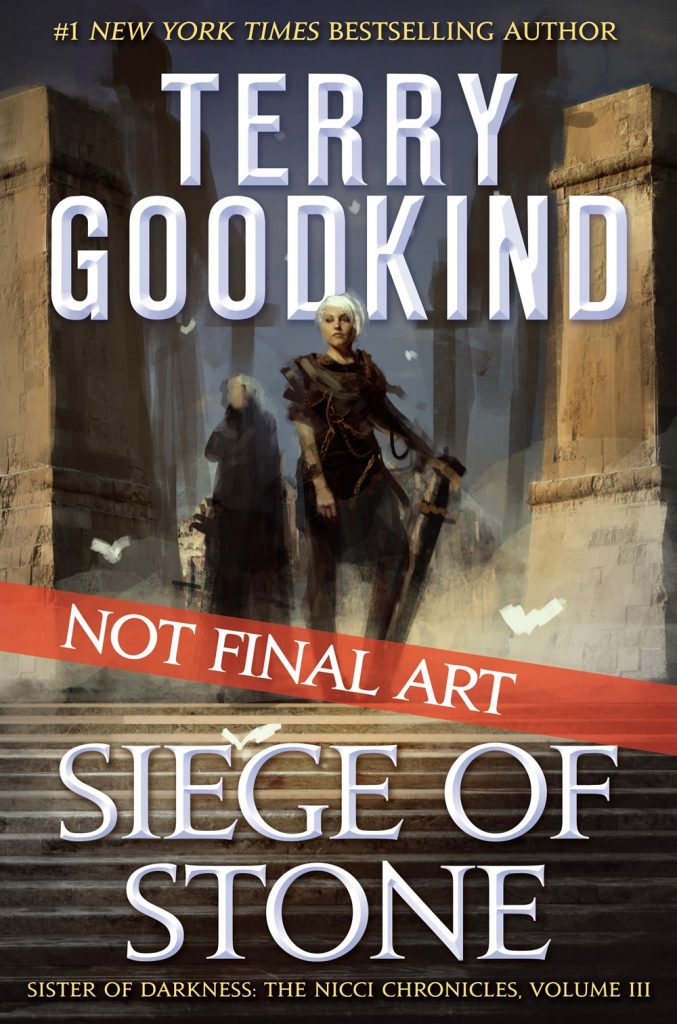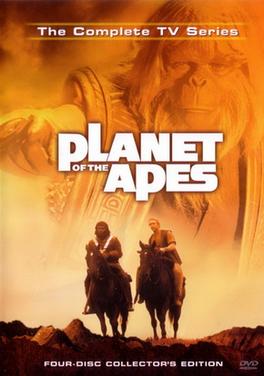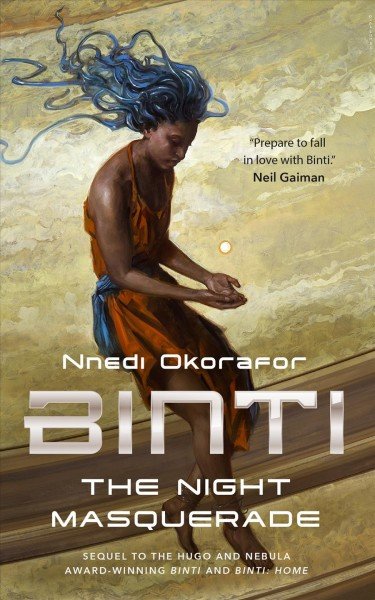(1) STAR WARS TRAILER UNVEILED AT CHICAGO CON. The Hollywood Reporter was at the Star Wars Celebration when the Episode IX trailer was screened.
After a year’s worth of speculation, emcee Colbert, Lucasfilm head Kathleen Kennedy and filmmaker J.J. Abrams unveiled the first teaser trailer for Star Wars: The Rise of Skywalker to a packed (and raucous) crowd at Star Wars Celebration in Chicago on Friday.
Among the big reveals is that Emperor Palpatine, the villain played by Ian McDiarmid in the previous two trilogies and thought to be dead, is back — as his laugh is heard at the end of the teaser. McDiarmid also walked out onstage after the trailer and ordered it to be replayed.
Earlier in the panel, Abrams made what might have been a reference to Palpatine, though he didn’t name him.
“This movie, in addition to being the end of three trilogies, it also has to work as its own movie,” said Abrams. “It’s about this new generation and what they’ve inherited, the light and the dark, and asking the question as they face the greatest evil, are they prepared? Are they ready?”
(2) 949. Maybe C-3PO deserves a new number, and not just the strange typo Fansided gives him while declaring “Anthony Daniels is the G.O.A.T. of the Star Wars films”
Daniels is one of the few characters who has appeared in all nine of the Star Wars films, which is a remarkable feat that should be celebrated among the Star Wars universe.
In fact, it was fitting that Daniels would be the first cast member introduced at the Star Wars Celebration in Chicago along with R2-D2, the other character to grace every single film. When you think of 3-CPO, you often think of Daniels, and without his unique take on this iconic character, 3-CPO wouldn’t be the beloved character he is today.
(3) PRIEST HONORED. GenCon 2019 has announced Cherie Priest as its Author Guest of Honor.
Gen Con, the largest and longest-running tabletop gaming convention in North America, has named Locus Award-winning and Hugo Award-nominated author Cherie Priest as the event’s 2019 Author Guest of Honor. Ms. Priest will take part in several events as part of the convention’s Writer’s Symposium program, including book signings and appearances.
(4) LOOKS LIKE HECK. NPR’s Chris Klimek’s reaction to Hellboy: “Hell, no!”
Hellboy, despite its colon-free title, is actually the fifth movie starring the good-guy demon hero (if you count the two animated films that featured the same cast as the live-action films made by monsteur auteur Guillermo del Toro in 2004 and 2008) and it’s even more exhausting than this sentence.
Pity. The blue-collar, crimson-skinned agent of the Bureau for Paranormal Research and Defense — basically a more inclusive version of the Men in Black, with a more casual dress code — is a marvelous character on the page. And because filmmaker del Toro has at least as much affection for 1930s serials and monster movies and European folklore as cartoonist Mike Mignola (Hellboy’s creator) does, his two adaptations of Mignola’s comics were revered. But like most del Toro films they were only moderate box office successes, and the profligate profitability of Marvel movies in the subsequent decade (Hellboy is a creator-owned specimen of IP, outside the Disney megalith) demanded that someone try to tap that rich vein again.
Englishman Neil Marshall would appear to be a sterling candidate: He made a trio of well-regarded low-budget genre flicks and directed two episodes of Game of Thrones, including “Blackwater,” which featured the climactic battle of the series’ second season. The chaotic, repetitive movie he’s given us here calls into question not just his competence but his taste….
(5) NIGHTFIRE BLAZES TO LIFE. “Tom Doherty Associates Announces Nightfire, a New Horror Imprint” – Tor.com has the story.

Tom Doherty Associates (TDA) President and Publisher Fritz Foy announced today the creation of NIGHTFIRE, a new horror imprint that will join Tor, Forge, Tor Teen & Starscape, and Tor.com Publishing as part of Tom Doherty Associates.
Foy will be Publisher, and TDA will add dedicated staff in editorial, as well as supplemental staff in marketing and publicity. Under the Nightfire imprint, editors will acquire and publish across the breadth of the genre—from short story collections to novellas and novels, from standalone works to series, from dark fantasy to the supernatural, from originals to reprints of lost modern classics. In addition to publishing books across all formats (print, audio, and ebook), Nightfire’s releases will also include podcasts, graphic novels, and other media.
(6) FINISHING SCHOOL. Jeff Somers brilliantly envisions “How 15 of Your Favorite Authors Might Finish George R.R. Martin’s A Song of Ice & Fire” at the B&N Sci-Fi & Fantasy Blog.
Brandon Sanderson
After reviewing George R.R. Martin’s notes, Sanderson announces it will take not two but six more books to finish the story properly. After delivering four 1,000-page tomes, Sanderson himself passes away (buried under a pile of 3,500 manuscript pages for the ninth book in the Stormlight Archive) with the story still incomplete. It is the year 2049. The final two books are completed by Christopher Paolini, working from Sanderson’s notes on Martin’s outlines, and are beamed directly into people’s brains via the NookVR brain uplink.
(7) QUIDDITCH REVISIONISM. Emily Giambalvo in the Washington Post profiles the University of Maryland Quidditch team, currently ranked No. 1 and headed to the national Quidditch Cup in Round Rock, Texas this weekend. But only a quarter of the quidditch players have read Harry Potter and capes and bristles on the “brooms” are now banned (platers compete with PVC pipes between their legs). “Crab cakes and quidditch: That’s what Maryland does”.
The Maryland quidditch team has a 27-3 record and is ranked No. 1 in the country, but it still exists in relative obscurity. Fellow students walk by the practice without adjusting their pace, but they keep their heads turned toward the training. Sometimes onlookers pull out their phones, capturing what seems like a strange combination between playful chaos and a serious sport.
(8) A LITTLE REVIEW. NPR’s Linda Holmes finds “Little: A Wrong-Body Comedy That Can’t Get Comfortable”
Marsai Martin is a star.
If you’ve seen her as Diane, the younger daughter on ABC’s Black-ish, you might already know. Diane is wise, wily, funny and a step ahead of her twin brother, Jack. And while scripts work wonders, you cannot create a character like Diane around an actress who wasn’t yet ten years old when she was cast in the role unless the actress in question has the chops for it. Martin’s first starring role in a film comes in Little, where she holds the screen opposite comedy powerhouses Issa Rae and Regina Hall. What’s more, everyone involved in promoting the movie says it was her idea — which she pitched when she was ten. Now, at 14, she’s an executive producer on the film.
…Unfortunately, the film needs more comedy and more consistency in the comedy it has. When it’s funny, it’s really funny, but it’s not funny frequently enough….
(9) TIME TREKKERS. YouTuber Steve Shives tries to determine “Who Is Actually Star Trek’s Most Reckless Time Traveler?”
(10) TODAY’S BIRTHDAYS.
[Compiled by Cat Eldridge.]
- Born April 12, 1884 — Bob Olsen. He wrote stories for Amazing Stories, from 1927 to 1936, many of them said to be of humorous inclination. He was one of the first writers to use the phrase ‘space marine’ in a two-story Captain Brink sequence consisting of “Captain Brink of the Space Marines” (November 1932 Amazing) and “The Space Marines and the Slavers” (December 1936 Amazing). I’m fairly sure thathe wrote no novels and less than twenty-four short stories. I do know that severe arthritis curtailed his writing career in 1940. (Died 1956.)
- Born April 12, 1915 — Emil Petaja. An author whose career spanned seven decades who really should be remembered as much for his social circles that included early on as H. P. Lovecraft, Clark Ashton Smith, Robert E. Howard, and August Derleth which later expanded to include Anthony Boucher, Frank M. Robinson, Poul Anderson, Ray Bradbury, Philip K. Dick and Robert A. Heinlein. It should not be overlooked that he did write seven novels and around forty short stories during his career with the stories appearing in Weird Tales, Fantasy and Science Fiction, Fantastic Adventures, Worlds of Tomorrow, Future Science Fiction Stories and other venues as well. (Died 2000.)
- Born April 12, 1936 — Charles Napier. Well let’s meet Adam on the Trek episode of “The Way to Eden”. Oh, that’s a horrible outfit he’s wearing. Let’s see if he had better genre roles… well he was on Mission: Impossible twice in truly anonymous roles, likewise he played two minor characters on The Incredible Hulk and he did get a character with a meaningful name (General Denning) on Deep Space 9. I surprised to learn that he was General Hardcastle in Superman and Justice League Unlimited series, and also voiced Agent Zed for the entire run of the Men in Black animated series. (Died 2011.)
- Born April 12, 1958 — Elizabeth Klein-Lebbink, 61. A LA-resident con-running fan. She has worked on a variety of conventions, both regionals and Worldcons, frequently in the art shows. She is has been a member of the Dorsai Irregulars. She is married to fellow fan Jerome Scott. Works for NASA where she writes such papers as ‘Measurements of Integration Gain for the Cospas-Sarsat System from Geosynchronous Satellites’.
- Born April 12, 1971 — Shannen Doherty, 48. Prue Halliwell on Charmed. (Watched the first, I think, four seasons. Lost interest at that point.) Her first genre role was voicing a mouse, Teresa Brisby to be exact on The Secret of NIMH. She was Cate Parker in Blood Lake: Attack of the Killer Lampreys — a film that can’t possibly be as bad as its name, can it? Though I’m willing to bet that Borgore & Sikdope: Unicorn Zombie Apocalypse, an Internet short film, in which she is a News Anchor is every bit as bad as its title!
- Born April 12, 1979 — Claire Danes, 40. Best known genre role is Kate Brewster in Terminator 3: Rise of the Machines. Also was Yvaine in Stardust, a film that’s not even close to its source material.
- Born April 12, 1979 — Jennifer Morrison, 40. Emma Swan in the Once Upon a Time series, and Winona Kirk, mother of James T. Kirk in Star Trek and Star Trek Into Darkness. She also paid her horror dues in Urban Legends: Final Cut as Amy Mayfield, the student videographer whose film goes terribly wrong. I’m intrigued to see that she’s the voice actor for the role of Selina Kyle / Catwoman in the forthcoming Batman: Hush, a film that needs a R rating to be told properly.
(11) COMICS SECTION.
- Ziggy makes an out of this world real estate deal.
(12) KEEP WATCHING THE SKIES. Popular Mechanics feels “Cave Paintings Suggest Ancient Humans Understood the Stars Much Better Than We Thought”.
Studying cave paintings from Turkey, Spain, France, and Germany, researchers have come to the conclusion that humanity’s ancient ancestors were smarter than previously given credit for. These famed paintings were not simply decorative, a new study says—they represent a complex understanding of astronomy predating Greek civilization.
And the paper their article is based on is just fascinating – the PDF is here: “Decoding European Palaeolithic art: Extremely ancient knowledge of precession of the equinoxes”.
(13) BLACK HOLE PHOTO CREDIT. The Washington Post sets the record straight in “Trolls hijacked a scientist’s image to attack Katie Bouman. They picked the wrong astrophysicist.”
…Identical memes quickly spread across Twitter, where one typical response was, “Andrew Chael did 90% of the work. Where’s his credit?”
But those claims are flat-out wrong, Chael said. He certainly didn’t write “850,000 lines of code,” a false number likely pulled from GitHub, a Web-based coding service. And while he was the primary author of one piece of software that worked on imaging the black hole, the team used multiple different approaches to avoid bias. His work was important, but Bouman’s was also vital as she helped stitch together all the teams, Chael said.
“Katie was a huge part of our collaboration at every step,” Chael said.
In truth, singling out any one scientist in a massive, cross-disciplinary group effort like the Event Horizon Telescope’s project is bound to create misapprehensions. Many who shared an equally viral image of Bouman clutching her hands in joy at the sight of the black hole came away wrongly believing she was the sole person responsible for the discovery, an idea the postdoctoral researcher at the Harvard-Smithsonian Center for Astrophysics has tried to correct.
(14) TILT THE TABLE, LUKE. Polygon reports “Entire Star Wars Pinball collection coming to Switch, with new modes”.
All 19 tables of Zen Studios’ Star Wars Pinball are coming to Nintendo Switch, with a vertical play mode that takes advantage of the Switch screen’s dimensions when held sideways.
In addition to being sold through the Nintendo eShop, Star Wars Pinball will also get a physical edition release, a first ever for a Zen pinball suite. Star Wars Pinball will launch for Switch on Sept. 13, 2019, the studio/publisher announced today in advance of this weekend’s Star Wars Celebration.
(15) REDFEARN. StokerCon UK, to be held April 16-19, 2020 in Scarborough, has announced its Editor Guest of Honour:
Gillian Redfearn is the Hugo Award-nominated Deputy Publisher of Gollancz, the world’s oldest Science Fiction and Fantasy imprint.
Within five months of joining the Gollancz team as editorial assistant she had commissioned the bestselling First Law trilogy from Joe Abercrombie, swiftly followed by acquiring the UK rights to Patrick Rothfuss’ novels. When she became Editorial Director for the imprint in 2014 she was selected as a Bookseller Rising Star, and two years later Gollancz was shortlisted for best imprint in the Bookseller Awards.
Throughout her career Redfearn has worked across the horror, science fiction and fantasy genres, with bestselling and award winning authors including Ben Aaronovitch, Joe Abercrombie, Aliette de Bodard, Joe Hill, Charlaine Harris, Joanne Harris, Sarah Pinborough, Brandon Sanderson, Alastair Reynolds and Chris Wooding, among many others.
(16) PKD’S LAST BOOK. Electric Lit’s Kristopher Jansma, in “Philip K. Dick’s Unfinished Novel Was a Faustian Fever Dream “, says “the sci-fi author died before he could write ‘The Owl in Daylight,’ but he described trippy plot ideas about aliens, music, and Disneyland.”
On January 10, 1982, the science fiction author Philip K. Dick sat down for an interview with journalist and friend Gwen Lee to discuss The Owl in Daylight, a novel that he’d been composing in his mind since May of the previous year. He wouldn’t finish—or even really begin—the book before his death from a stroke a few weeks later, but the novel he outlined to Lee has had as strange an afterlife as Dick himself.
(17) THEY LOST ON JEOPARDY! Andrew Porter monitored tonight’s Jeopardy! outrage —
Answer: The director of the 2018 version of this 1953 classic said, Yes, books were harmed in the making of this motion picture.
Wrong Question: “What is Burn After Reading”?
(18) WHAT DO THEY KNOW. Heresy! “Coffee not essential for life, Swiss government says”.
The Swiss government wants to put an end to its emergency stockpile of coffee after declaring that it is “not essential” for human survival.
Switzerland began storing emergency reserves of coffee between World War One and World War Two in preparation for potential shortages.
It continued in subsequent decades to combat shortages sparked by war, natural disasters or epidemics.
It now hopes to end the practice by late 2022. But opposition is mounting.
It currently has 15,300 tonnes saved up – that’s enough to last the country three months.
(19) EARLY LEARNING. “Artists draw on Scotland’s Neolithic past” to teach people how to build their own timber circles. Should they be interested, that is…
Artists have drawn on Scotland’s Neolithic past to create a series of new illustrations.
The artwork, which includes a tribe and a guide to building a ceremonial timber circle, is for a free education pack called The First Foresters.
It has been created by Forestry and Land Scotland, formerly Forestry Commission Scotland, and Archaeology Scotland.
The artists were guided by European Neolithic artefacts for their drawings.
…”Alan produced the bulk of the illustrations, including a fantastic image of a decaying timber circle being enclosed by an earthen henge, and a fabulous ‘how to build a timber circle’ instruction sheet.
(20) GUNS & WHAMMO. Apropos of recent discussions here, Evan Allgood shows you what “Poorly Researched Men’s Fiction” looks like, at McSweeney’s.
I had a whole gaggle of 100-point bucks in my sights, sleeping peacefully on their feet, like cows. The way they were lined up, I could take down the whole clan in a single shot of gun, clean through their magnificent oversized brains. That’d be enough (deer) meat to last Nora and the baby through the harsh Amarillo winter. I shifted my weight in my hidey spot, snapping a twig and pouring more pepper on the fire by muttering, “God dammit all to hell.” But like any hunting man worth his salt, I was wearing camouflage — that swirly brown-and-green stuff you sometimes see on bandanas. The deers, famously self-assured creatures, didn’t budge. They were awake now, munching happily on some squirrels they’d killed for food, the carnivores. But now they were the squirrels in this equation, which felt somehow ironic….
(21) UNAIRED. You can see a four-minute clip from an unaired Star Trek pilot filmed in 16mm.
The original print from Star Trek’s 2nd pilot was never aired in this format. Had different opening narration, credits, had acts 1 thru 4 like an old quinn martin show and had scenes cut from aired version and different end credits and music. The original 16mm print is now stored in the Smithsonian
[Thanks to Andrew Porter, Carl Slaughter, John King Tarpinian, JJ, Chip Hitchcock, Cat Eldridge, Mike Kennedy, and Martin Morse Wooster for some of these stories. Title credit belongs to File 770 contributing editor of the day Darren Garrison.]

